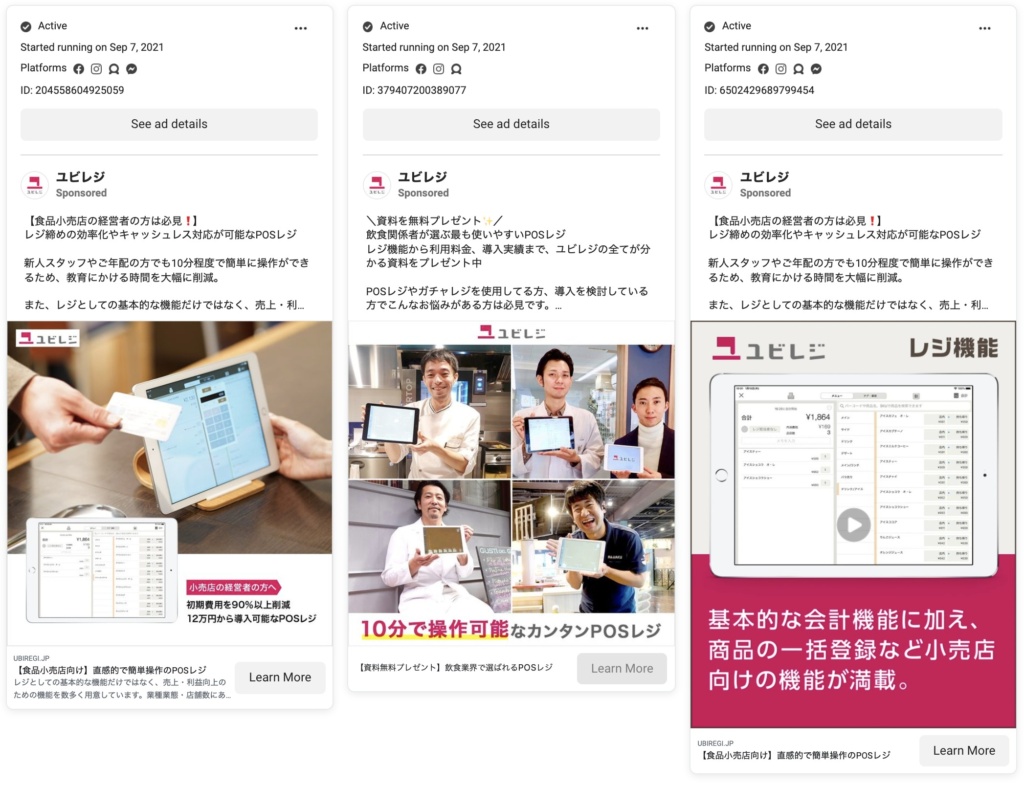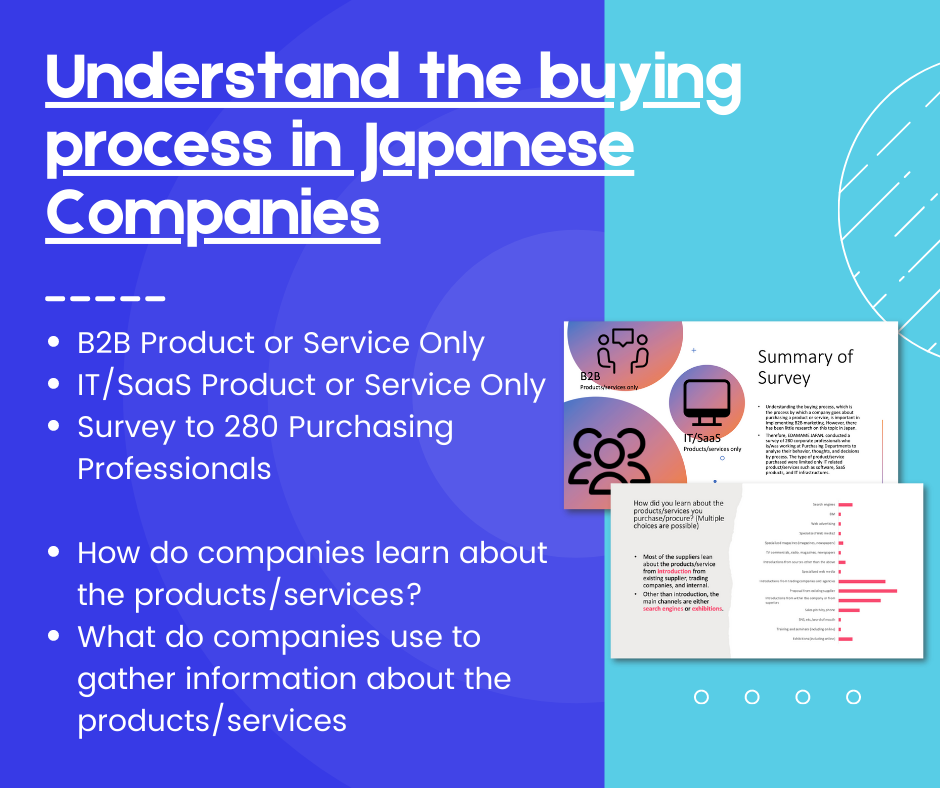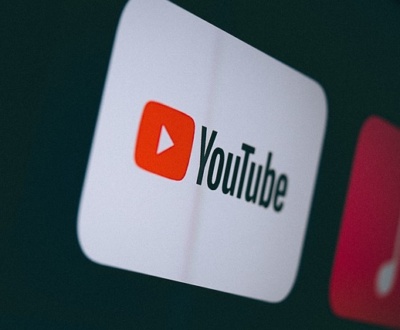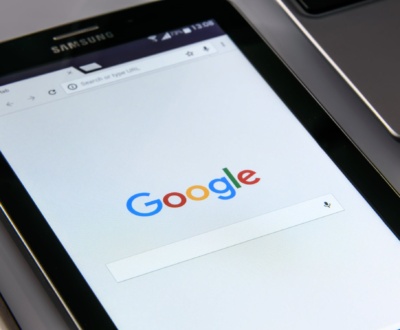B2B Social Media Marketing Basics and Features in Japan

B2C type Social Media Marketing, which appeals from companies to individual consumers, has been implemented by many companies. On the other hand, as the number of corporate accounts on Social Media is also increasing, B2B type Social Media marketing that appeals from companies to companies is attracting attention. In recent years, there are some companies in Japan that have gained a large number of followers and leads through B2B Social Media Marketing that utilizes multiple Social Media.
Social Media Marketing is an effective marketing method for large companies and small and medium-sized companies because advertising can start from a low budget. This article will introduce the features and examples of B2B Social Media Marketing in Japan.
- Characteristics of B2B Social Media Marketing in Japan
- Using Social Media Marketing as BtoC in Japan
- Differences between BtoC and B2B in Japan
- In B2B, the target setting is more specific than in BtoC.
- In B2B, the internal settler makes the purchase decision.
- In B2B, the time to purchase decision is long
- Various purchase patterns, from one-time to ongoing
- The purchase price may be high.
- Third-party opinions (so-called word of mouth) tend to be scarce.
- The Aim of B2B Social Media Marketing in Japan
- The right company for B2B Social Media marketing in Japan
- What are the benefits of using Social Media advertising for B2B companies in Japan?
- It is essential to select Social Media in Japan according to the purpose.
- The lead acquisition advertising for B2B Social Media Ads in Japan
- Summary
Characteristics of B2B Social Media Marketing in Japan
Social Media (aka. “SNS” in Japan) such as Facebook, Twitter, and Instagram in Japan has grown into a vast advertising media due to many active users, and BtoC type Social Media marketing is being actively conducted. In recent years, B2B type Social Media marketing has been attracting attention.
Related article: What is SNS in Japan? | Meaning and popular Apps ranking in 2019
Using Social Media Marketing as BtoC in Japan
One of Social Media marketing features is the diffusion of information through Social Media’s engagement functions (like, share, click, etc.). Even today, many companies are still implementing Social Media Marketing by utilizing the features of each Social Media such as LINE, Facebook, Twitter, and Instagram.
Generally speaking, Social Media Marketing is a BtoC type marketing method that appeals to consumers from companies. In other words, it is a method aimed at increasing the awareness of products and services to consumers, branding, acquiring new customers, and improving the repeat rate of existing customers.
Differences between BtoC and B2B in Japan
BtoC” is an abbreviation of “Business to Consumer” and refers to transactions from companies to consumers. On the other hand, “B2B” is an abbreviation of “Business to Business” and refers to transactions from business to business. In other words, there is a difference in whether the purchaser of a product or service is an “individual” or a “company.” Let’s take a deeper look at the differences in purchasers.
In B2B, the target setting is more specific than in BtoC.
Imagine if you are trying to increase awareness of ice cream in BtoC or trying to expand sales of condensers to a computer assembly manufacturer in B2B. B2B is more focused and clear in the target (=company) you want to convey your message to.
In B2B, the internal settler makes the purchase decision.
In BtoC, consumers basically make purchase decisions based on their own will. On the other hand, in B2B, the person in charge of the company gathers information about the product or service, makes a rational decision, and consults with the decision-maker. The final purchase is made with the addition of the settler’s logical thinking and approval process.
In the case of BtoC, there are many cases where “purchaser = consumer,” but in B2B, it is generally “purchaser = settler ≠ consumer.”
In B2B, the time to purchase decision is long
Compared to BtoC, where “buyer = consumer” is often the case, in BtoC, multiple people are involved in the purchase decision, so there are many processes until the purchase decision is made. The time until the purchase decision is made is longer.
Various purchase patterns, from one-time to ongoing
In B2B, various purchase patterns depend on the purpose of purchase. If the purchase is to create a prototype, it is a one-time purchase. If the purchase is for materials or parts for a product, it is a continuous purchase.
The purchase price may be high.
Because the purchaser is a company rather than an individual, the purchase price of some products and services can be significant.
Third-party opinions (so-called word of mouth) tend to be scarce.
In the case of BtoC, word-of-mouth from consumers who have decided to make a purchase is often gathered. On the other hand, it tends to be challenging to collect information about products and services purchased by companies.
The Aim of B2B Social Media Marketing in Japan
In Japan, B2B marketing is usually conducted through direct communication between the selling company and the buying company (direct marketing) to value the needs and response of the company as the customer. After contacting the company that will become the customer through direct marketing, based on the idea of nurturing, we aim to build a good relationship and conduct concrete business negotiations.
On the other hand, the main features of Social Media marketing in Japan compared to regular marketing are as follows.
- It is easy to develop potential customers, reach out to prospective customers through recognition, and acquire leads. In other words, it is easy to receive potential needs as leads and to nurture customers.
- It is easy to provide information to existing clients. It also leads to the acquisition of new leads through the provision of information to existing clients.
- Business people follow company accounts in their industry. Therefore, reciprocal communication using Social Media can shorten the distance between them and the client company, give them a sense of closeness, and build a good relationship.
The right company for B2B Social Media marketing in Japan
Social Media marketing is highly recommended for companies that make marketing their livelihood due to its feature of distributing company information and product information to the target audience. Digital marketing, influencer promotion, website creation, and other marketing capabilities can be showcased through your company’s Social Media operations.
Companies that want to increase their visibility and branding
By using Social Media to communicate information that cannot be conveyed simply through product descriptions in catalogs and websites, you can improve your products and services’ recognition and brand power. You can also expect to increase the appeal of your products by enhancing your corporate image.
Companies that have just arrived in Japan and want to spread their recognition
By utilizing Social Media advertising, which is one of the means of Social Media marketing, it is possible to conduct advertising activities from a low budget. In other words, even if your company is not well known in Japan, you can send out information about your company to your target companies and increase your recognition. In addition, Social Media Advertising allows you to analyze the relationship between your invested budget and the effectiveness of your advertising, so you can continuously improve your advertising activities.
Companies looking to deepen relationships with their business partners
Social Media makes it easy to communicate with each other so that you can build a sense of familiarity and a good relationship with your business partners and potential customers (companies).
What are the benefits of using Social Media advertising for B2B companies in Japan?
To begin with, what are the advantages for B2B companies to utilize Social Media advertising in Japan?
High level of targeting accuracy
Much Social Media media have many MAU (monthly active users), so it is possible to optimize for various KPIs from within that MAU automatically. It is easy to lead to results.
In addition, Facebook allows pinpoint targeting by real name, age, and gender area registered by the user. It is also possible to target by department, the person in charge, or users who are close to the targeted user, which is challenging to do with other media.
When it comes to direct conversions, it is easier to get results with listing ads that target the “obvious” segment, which is users who are aware that they want a product, but unlike the “potential” segment, the volume is small.
It’s also a demographic that gradually loses conversions because it only gets conversions from the apparent users.
Compared to listing advertisements targeted at potential customers, Social Media advertisements have a broader target audience and can increase interest in products and services.
Uncovering potential customers
Because you can display ads on Social Media, which users check daily, regardless of time and place, whether at work or in their private life, you can catch the eyes of potential customers (the layer in the yellow box who are not yet aware of your product or service but whose needs will become apparent in the future) and have them recognize your ad. There is an effect of catching the eyes of potential customers and making them aware.
The number of users and companies using Twitter and Facebook to send out webinar information, employment information, etc., is increasing. The number of people using Social Media to send out and gather information about the business is also growing. Social Media is becoming a platform for businesses, with millions of companies and customers, both large and small, connecting on Social Media.
In addition, as a feature of Social Media advertising, there are many cases where ads are delivered in an in-feed format, making it possible to deliver ads to users without any sense of discomfort by blending the ads naturally into the feeds of each Social Media.
You can create an opportunity to reveal the need for such a tool to potential customers. This will lead to the creation of a chance to reveal the needs of the potential customers and increase the possibility that they will use your products and services.
Users tend to prefer Social Media that contains information of high interest to them. Therefore, by identifying the demographics of the users of each Social Media medium and selecting the medium with the highest affinity, you can generate more substantial interest in your ads.
It is essential to select Social Media in Japan according to the purpose.
Each Social Media has its own specification and user characteristics, and each company opens an account considering the features. Therefore, it is necessary to consider which Social Media is used by the company (or industry) to convey information.
Because Instagram can simply convey a good look and feel, many corporate accounts have been opened in Japan in many industries, especially in the fashion and tourism industries. Because of the small amount of text information, in actual B2B Social Media marketing operation cases, we can see cases where it is used in parallel with Facebook and Twitter.
YouTube
YouTube is a social media platform that allows users to share information in an easy-to-understand way that cannot be conveyed through images or text. In Japan, compared to Facebook, Twitter, and Instagram, the use of YouTube as a B2B medium is still in its infancy.
TikTok
TikTok is a social media platform that allows users to post short videos with background music, and in Japan, it is mainly used for BtoC type marketing.
Twitter is a social media platform that users of all ages in Japan use, and many companies in a wide range of industries have opened official accounts.
Like Twitter, Facebook is a Social Media with a wide age range of users in Japan, and it tends to be used primarily by business people in their 30s and 40s. As a result, many official corporate accounts have been opened.
Another advantage is that Instagram ads and Facebook ads can be operated seamlessly.
Line
LINE boasts an overwhelming market share of over 80% among individual users in Japan. However, it is mainly a BtoC type service, and there are few B2B cases.
Related article: Top Japanese Social Media Apps: Demographics of 7 Major Apps in 2020
The lead acquisition advertising for B2B Social Media Ads in Japan
Social Media advertising is characterized by its flexibility in targeting, and to achieve high results, it is essential to select and utilize effective targeting. In addition, by distributing ads to many users, it is possible to achieve results and cultivate potential users at the same time.
As mentioned above, Social Media advertising has a variety of objectives. However, among them, lead acquisition advertising can maximize its effectiveness because the action can be completed on the medium.
Lead Acquisition Advertising
It is an ad format dedicated to lead acquisition with an input form that requires a landing page.
You can encourage users to fill out forms directly on Facebook and Instagram. The most appealing aspect of lead acquisition advertising is that it is dedicated to capturing leads from users without the need for a website.
For example, on Facebook and Instagram, you can prompt users to fill out forms directly on the Social Media screen and automatically based on the information they have registered in their profile. By minimizing the user’s stress, you can expect higher results than with other media.
Actual use cases
Ubiregi (cloud POS registers application)
Reduced lead acquisition cost by 64% and increased conversion rate by seven times by using a combination of lead acquisition ads and CV ads.

Summary
This article introduces the benefits of using Social Media advertising for B2B companies in Japan, the leading media and distribution methods.
Its flexibility in targeting characterizes social Media advertising, so it can be delivered to more users than listing advertising.
In addition, by distributing to a large number of users, it is possible to achieve results and nurture potential customers simultaneously.
Therefore, it is also possible in Japan to achieve results by implementing advertisements that aim to acquire leads, such as white papers and other materials that will lead to requests for information.
About us and this blog
We are a digital marketing company with a focus on helping our customers achieve great results across several key areas.











